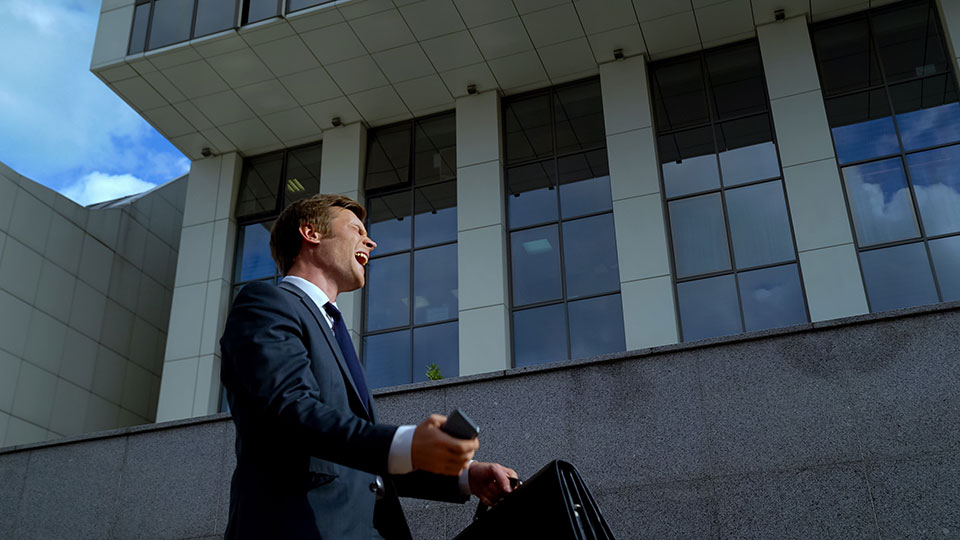Using Resiliency Training to Curb Depression in Professionals

Overload.
Overwhelm.
Fatigue.
These are just a few of the words I have heard people use to describe their work and life.
But the number one word that’s come up more recently, I hadn’t heard before – relentless.
People are moving hard and fast. They are delivering more than ever, and they have fewer resources to do it.
As you may know, the US Census Bureau has been conducting ongoing surveys to assess the nation’s mental health. In a recent podcast episode, Dr. David Palmiter, a professor of psychology and a practicing clinician for over 30 years, shared the following numbers that were released in September 2020:
- 52% of the population is feeling down, depressed or hopeless at least several days a week.
- 21% are feeling down, depressed or hopeless more than half of the time.
- 63% of the population is feeling nervous, anxious, or on edge at least several days a week. 30% feels the same way more than half of the time.
To navigate these complex times, we need more than just mental fortitude.
We need more than just grit.
It’s not just about sucking it up.
We need to build resilience into the fabric of our teams. Greater resilience leads to improved learning and is related to fewer absences from work or school due to sickness.
Resilient organizations are more inclusive and resilient teams are better equipped to adopt an agile approach to their work.
And resilient people cope with unexpected event in healthier ways.
Here are five strategies to help build resilience in your team and organization.
Strategy #1: Accept Reality
It’s easy for a team to exaggerate or distort the current situation. It’s also tempting to avoid and sugar coat any given experience. However, when teams accept the facts and stay grounded in the current reality, without exaggeration or avoidance, team members can develop sustainable behaviors to take intentional steps forward rather than fight and resist their reality.
Strategy #2: Build Connections with Team Members
According to research presented by Dr. David Palmiter, having connected relationships is the number one predictor of long-term physical and mental health. The next predictor is a distant second. Connection is one of our deepest human needs and is ultimately about feeling a sense of belonging. In the workplace that means having a fulfilling and meaningful relationship with team members and managers. Leaders and teams can build stronger connections by listening, rethinking their meetings, creating informal opportunities to socialize remotely and creating psychological safety during interactions.
Strategy #3: Integrate Emergent Strategies into Team Planning
The market is shifting so quickly and the plans we created at the beginning of the year or quarter may now be temporarily or permanently obsolete. We must be prepared to take strategies that are emerging in real-time and integrate them into existing team plans. Henry Mintzberg, a professor, author and researcher on management theory, described what he called emergent strategy. An emergent strategy is a pattern of action that develops over time in an organization as original plans collide with and accommodate a changing reality. In other words, our strategy emerges informally as we react and respond to market conditions. An emergent strategy happens less formally and deliberately and can emerge from any level within an organization.
Strategy #4: Be Change Ready
We need to stop thinking that once we get through this change (the pandemic, the election, an acquisition, a demerger, etc.), we’ll have a chance to breathe. Today’s pace of change is the slowest we will all experience for the remainder of our careers, at least in the corporate world. We must help our teams make a mindset shift to embrace the fact that constant and never-ending change is the new norm.
Strategy #5: Provide Support
There are a number of resources that may be available to your team members including an Employee Assistance Program (EAP), online visits with doctors and nurses, as well as digital tools to help manage their health. Many of our clients are encouraging the use of paid time off, non-traditional hours and no meeting Fridays. There are many ways to support people, not just with their mental and physical health, but also with personal challenges that may arise due to homeschooling, childcare or other changes due to COVID.
Resilience is a critical skill in our volatile, uncertain, complex and ambiguous time.
The good news?
The capacity to be resilient can be learned. Start with some of the strategies above and watch your team shift from surviving to thriving.
Written by Sal Silvester.
Bring the best of the CEOWORLD magazine's global journalism to audiences in the United States and around the world. - Add CEOWORLD magazine to your Google News feed.
Follow CEOWORLD magazine headlines on: Google News, LinkedIn, Twitter, and Facebook.
Copyright 2025 The CEOWORLD magazine. All rights reserved. This material (and any extract from it) must not be copied, redistributed or placed on any website, without CEOWORLD magazine' prior written consent. For media queries, please contact: info@ceoworld.biz








